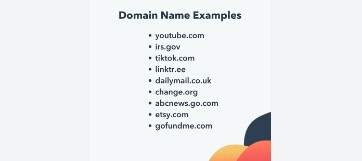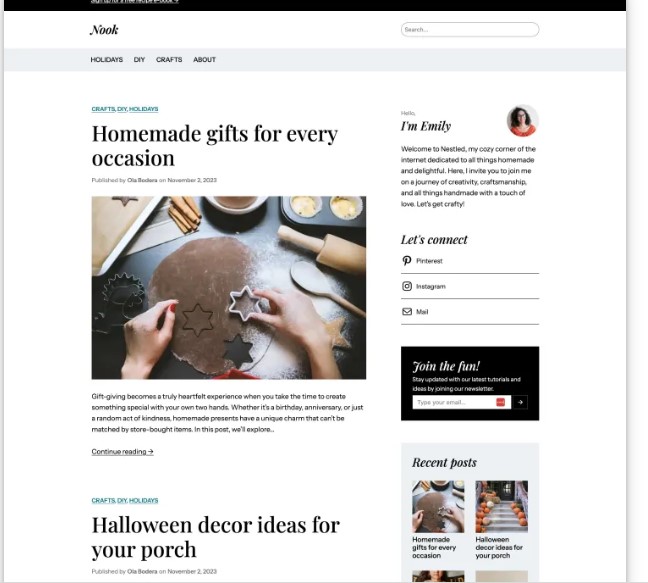7-step guide on how to start blogging as a complete beginner in 2024

Without a doubt, working on improving your writing skills is key to enjoying being a good communicator. It is totally worth the effort and what’s more, with the right amount of preparation and skill, you can turn writing into your career by becoming a blogger. As a blogger you get to educate your audience on important things they did not know about. You also inspire them to take necessary action, to improve the quality of their lives.
Blogs are indeed very powerful. The same way you can inform and inspire is the same way you can misinform and mislead your audience. Take a blog about medicine for instance. Without proper research, a blogger can easily mislead a person into trying out dangerous methods of self-medication which can end up causing significant harm. This article shows you what you need in order to start blogging and how to start doing it. Remember, if you are truly passionate about this, then you will be patient with your blogging journey. I hope you find this read helpful and inspiring.
What knowledge will you require to start blogging?
Well, I have good news for you dear reader. You do not need to know programming or any of that “complicated stuff” for you to become a blogger. It is a valuable skill to have no doubt about that; but with Content Management Systems [CMS] like WordPress available, things have been simplified. So, you first have to know how to design a website. In this article, you will learn how to design your website, make it available for the whole world to see then write your own blog.
What is a blog?
A blog is a piece of writing about a topic that you are interested in. These topics are then posted online for a specific target audience. While looking for specific information on search engines such as Google, readers then come across the most helpful websites with blog articles answering their questions. A blog can be a specific page on a website, or an entire website can be a blog. An example of this is The Fashion Guitar, which is a fashion blog. (One of the highest-ranking fashion blogs on Google). On the other hand, the image below shows you a blog page as part of a website.

1. Choose a Content Management System (CMS) & Hosting Provider.
To start writing professional blogs, you first have to select your CMS and consequently a hosting provider. A CMS is an application that allows you to manage, edit and publish your content. I personally recommend using WordPress as it is the most beginner friendly and it has many features that allow for better creation and customization of websites. There are other CMS out there such as:
- Wix
- Optimizely CMS
- Contentful
- Squarespace
- Drupal
A hosting provider gives you a domain. This is an identification of your website. For instance, my domain is www.victoreliudmarketing.com. This domain is unique to me and therefore cannot be used elsewhere. Most hosting providers offer domains at a relatively cheap price. A great host would be dreamhost. After completing some necessary steps in acquiring your very own domain and installing a CMS, you will be good to go to the next step.
If you may not have the money to invest in a paid-version of a CMS or even a web-hosting provider, you can start blogging for free, but with limited functionality to your website designing. This means your website has a lower chance when competing with similar websites designed using paid versions.

2. Find a profitable niche and master it.
Step number two is to find your niche. Ask yourself these questions to identify your niche:
- What am I skilled in that I can write about and teach other people?
- Am I passionate about it?
- Is the niche so competitive? What topics can I write about and who is my competition?
Check out Google Trends to get a glimpse of what people search for on Google as you identify your niche. Try to identify the most searched for niches and venture into those, creating better quality content than your competition.


To be profitable in blogging, you need to have chosen to write about things that that you genuinely care about. If you only chose to write as a means of making money, then you will lose motivation along the way. Let’s say you are a good cook. To be skilled in cooking means you first took an interest in the activity, practiced for a significant amount of time, got positive feedback from others then came to the conclusion that you can actually cook.
So then, you can decide to start a food blog. With time and a significant amount of experience in designing websites and writing blogs, your audience grows and what started out only as a hobby gradually becomes a source of income. You can create:
- Travel blogs
- Mom blogs
- Relationship blogs – if you are a relationship coach
- Personal finance blogs
- Health blogs
- Beauty blogs
- Self-help blogs
and so much more…
Lastly, ensure you get to know your audience. Know everything about them. What content they like. How they like it. What they do not respond to.
3. Select a name for your blog and domain

What do you want your blog to be about? Let’s say you want to write a photography blog as your website. You can give it your name and what it is about. This tends to make it easier for the reader to understand what you write about. It also helps them to remember your website. Consider putting:
- Your names.
- What the site is about.
- Something creative.
It can be Firstname+lastname,+what you write about.com or .net. Go for .com and .net as they are widely used and are easier for your audience to remember. If stuck use this blog name generator.
4. Design your blog appearance.
At this stage you have set up almost everything. You have a domain which is the most crucial part, and you have access to a Content Management System (CMS). Now all you need is to learn how to use your CMS to design your blog.
a. Choose a pre-designed template for your blog.
A template makes your blog look more appealing and professional to your readers. Only simply writing a blog without including some pre-designed templates leaves your blog looking extremely plain. It is important that you choose one that is in line with your blog’s content. Keep in mind that whatever color you chose for your template will have an effect on your audience. Check out color psychology. to understand what color to choose for your blog’s template.
b. Select your website pages.

The blog above has pages on its header namely: Holiday, DIY, Crafts and About. These pages all have unique content which tell the reader more about their blog. The template gives you a homely feeling, meaning it has served its purpose. You can include the following pages:
- A Contact page – Tell your audience how to contact you by including your socials or a contact form.
- A Home page– Tell your audience what your blog is about here.
- An About page– Tell your audience about yourself.
- An Online store- You can include products on this page where your audience can buy things you are selling. It can be anything from shoes if you have a fashion blog to kitchen utensils if you write a food or a mom blog.
Tip: Design your logo at this stage. It represents your brand.
c. Work towards improving your website and user experience bit by bit.
The better your website become the more it will attract traffic. As you make progress in your blogging journey, more insight on how to rank better on a search engine such as Google will be made available to you. You will learn that the more in-depth and helpful your blog is the better it becomes for you and your audience.
Learn SEO techniques such as the use of internal links to get you a higher ranking on Google. Create a silo which allows you to identify your keywords and structure your website in a way that it is inter-connected.
If you would like more information on how to design your blog posts using WordPress, consider checking out this free course teaching digital marketing. It is a short one taking 2-4 weeks depending upon your speed. Within the first few days, you will have learnt how to have said website indexed, (available for the entire world to see) and you will also have learnt how to design and run your own website. You will be required to use dreamhost as a hosting provider as it is used through the course. Consider this as part of your journey as a blogger.
5. Write your blog.
Having created a content silo and identified your keywords, you can now start writing your blog. Make sure to write engaging content. Just as doctors are professionals, you now are a professional in what you do. Grab your audience’s attention by starting off your blog with an interesting quote or statistic. A blog has :
- An introduction – With headings and sub-headings,.
- A body with text, images, videos and links to other resources and websites.
- A conclusion but it is optional.
These are some of the rules to follow when blogging:
- Be free as you write. Allow room for creativity to flow.
- Avoid lying to your audience- DO NOT fake achievement or partnerships.
- Do not rush. It takes several hours to write and to complete a blog.
- Have all the necessary resources.
- Decide what tone you will use in writing. You can be funny, casual or even formal.
- Be organized – make your blog/website as user friendly as possible.
- Be original- Some writers cut and paste content from other writers. Believe in your ability to write and captivate your audience.
- Always be open to Learn something new.
- Utilize Artificial Intelligence in writing your blogs. AI can help anywhere from choosing templates down to your writing.
6. Work on small aspects of your blog and take a break.
Spend quality time with your friends and family. Train, eat healthy, pray if you are a religious person, meditate. Regain your strength. You have earned it. When ready come back to blogging and outwork your competition. You have just written your first blog post.
7. Plan on your next blog post
Come up with a solid to-do-list about what to write about. Creating a content silo at step 4 should have given you an idea on how to go about it. You can use Google Sheets to plan out your content URLs and when you plan to write the content. Keep in mind the SEO techniques that you will have learnt.
Lastly if you need any help building and maintaining your website click here
